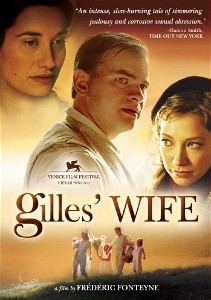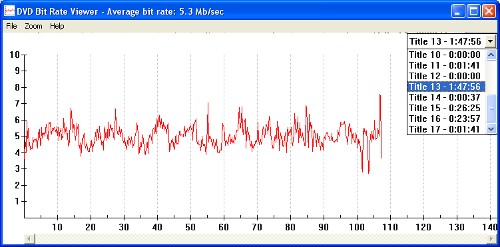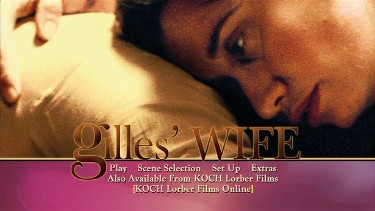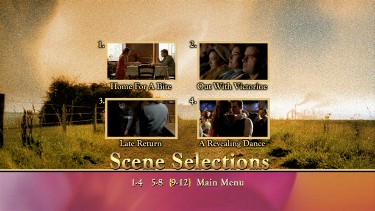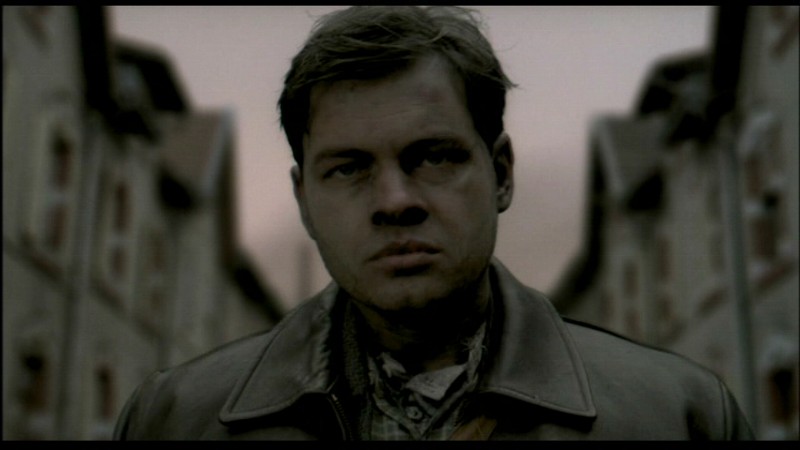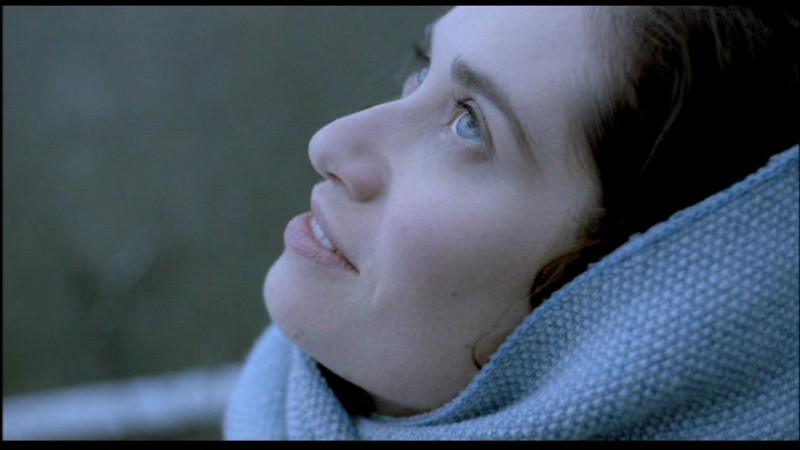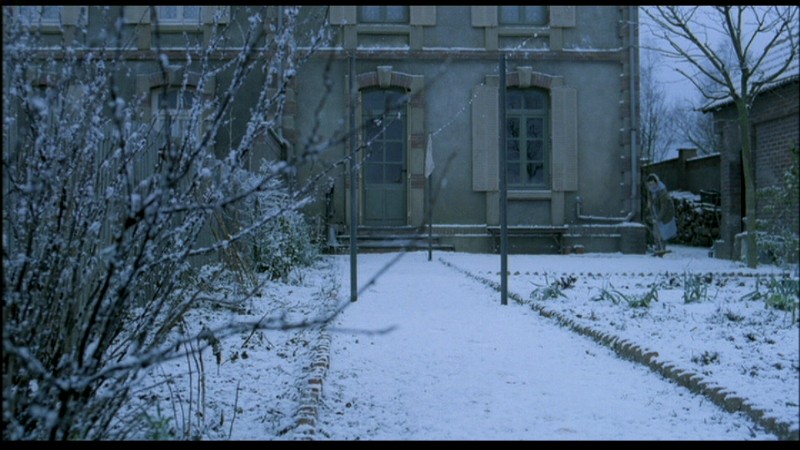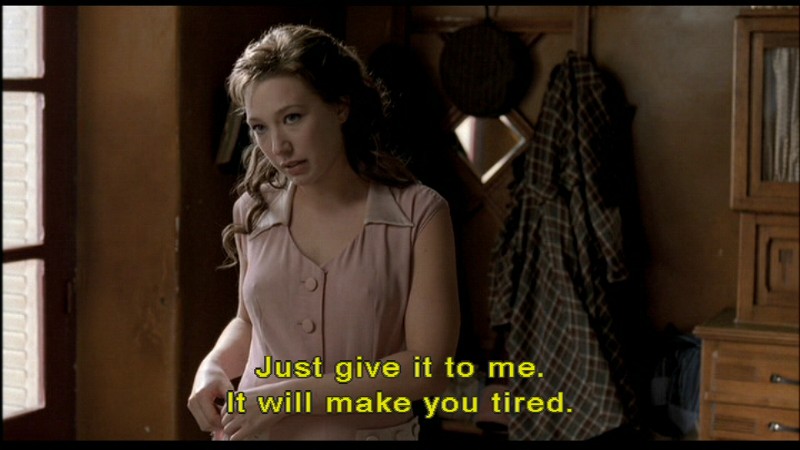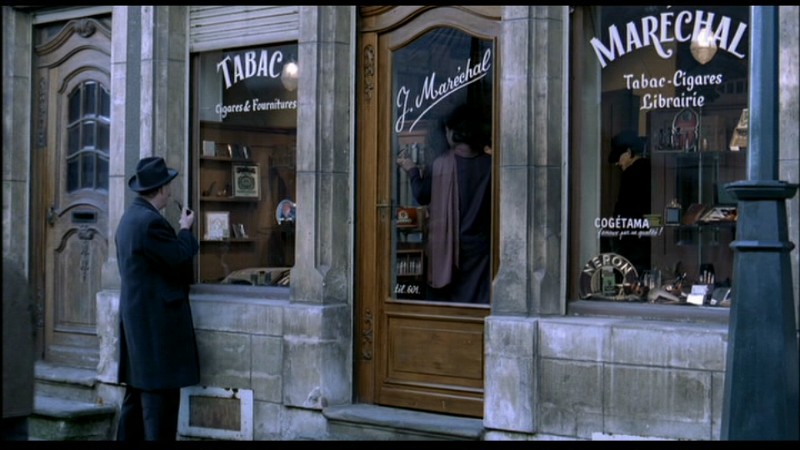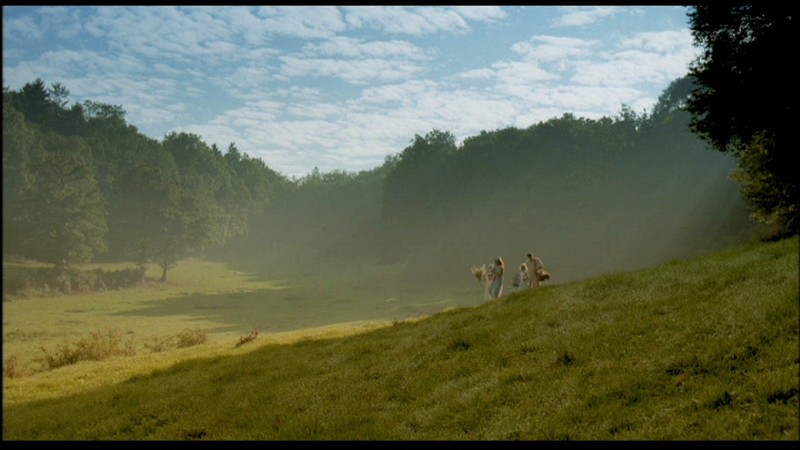![]()
![]()

![]()
![]()
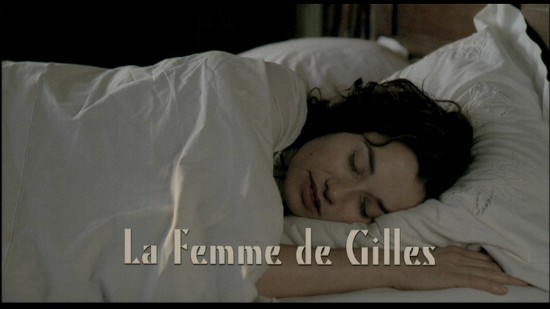
(aka "Gilles' Wife" )
directed by Frédéric Fonteyne
Belgium 2004
I thought that Emmanuelle Devos delivered
the best performance of 2005 (based on American release dates) in “Kings
and Queen.” Now I realize I was mistaken. The best performance of 2005
was actually… Emmanuelle Devos in “Gilles’ Wife.”
“Gilles’ Wife” is a film by Belgian director Frédéric Fonteyne, and
it reminds me of another film by a Belgian director: Chantal Akerman’s (in)famous
“Jeanne Dielman, 23 Quai du Commerce, 1080 Bruxelles” (1976). “Gilles’
Wife” is hardly the equivalent of Akerman’s masterpiece cum endurance
test, but the films tackle similar material. Each film depicts a woman
(Jeanne, a widow; Elisa, a wife) whose world is circumscribed by the daily
rituals of domestic servitude, and who eventually rebels against her
repressive environment.
Though made nearly thirty years later, “Gilles’ Wife” is set a little more
than thirty years before "Jeanne Dielman" in 1930s Belgium. Elisa (the
titular wife, played by Devos) is happily married to Gilles (Clovis
Cornillac), a big oaf with the emotional maturity of a doorstop. The
“happily” part of the marriage is sorely tested when Gilles falls hard and
heavy for Elisa’s younger sister Victorine (Laura Smet). Surprisingly, even
when the shocking affair is brought into the open, Elisa does not protest.
Instead, she tries desperately to hold the marriage together by any means
necessary, which includes helping Gilles to pursue Victorine.
Even in the face of Gilles’ childish outbursts and the ungrateful
behaviour
of Victorine and practically everyone else in her life (even the town priest
fails her), Elisa bears everything with a quiet smile and nary a whisper of
protest. Where “Jeanne Dielman” has become a feminist icon, Fonteyne’s film
practically invites condemnation from virtually all corners for its
portrayal of a wife happily bearing the slings and arrows of her outrageous
asshole of a husband. Of course, the obvious question (and the fundamental
tragedy of the situation) arises: What the hell else is Elisa supposed to
do?
What motivates Elisa’s passive acceptance (besides her lack of options? The
only answer we ever get is from the infinitely expressive face of Emmanuelle
Devos, a face which bears the weight of the entire film, just as Elisa bears
the entire weight of her crumbling marriage. Time and again, Fonteyne
returns to a similar camera set-up: Elisa in foreground, her face
inscrutably serene, with Gilles and/or Victorine (or perhaps another
character) in the background, blurry and distant as if in a world entirely
separate from Elisa’s inner thoughts. With just the slightest modulation of
glance or expression, Devos conveys worlds of strength and pain, hope and
despair. Devos’ performance is made all the more mesmerizing by the fact
that there’s something not-quite-right about her face, or rather something
not “movie star-ish” about it. Is the nose a little off-center? The mouth a
bit too wide? Whatever the case, her face is so spellbinding, so singular,
that Fonteyne has practically made a documentary about it. I’m not the only
critic to notice this. Roger Ebert wrote: “I was fascinated by the face of
Emmanuelle Devos, and her face is specifically why I recommend the movie.”
Devos’ face is not the only reason to recommend “Gilles’ Wife,” however.
Like Akerman, Fonteyne documents his heroine’s gradual decline in
excruciating detail. Though “Jeanne Dielman” was vastly more rigorous (a
“structural film” compared to Fonteyne’s more standard narrative film), the
breaking point in each film is presented in a similar manner. Jeanne Dielman
drops a piece of silverware while setting the table, and the end is near.
Likewise, Elisa drops her hair brush one morning while preparing for another
day as the happy housewife. With this simple gesture, we know that she has
reached the limits of even her Job-like endurance. I will leave you to judge
the tragic ending for yourself: it has caused some controversy but I found
it moving, though a bit too coy in its artsy-fartsy delivery.
“Gilles Wife” is not a great film: the other two leads are a bit dull
(though perhaps they are supposed to be) and a few scenes in the middle act
are a real drag. However, the lush cinematography (even more effective in
cramped domestic spaces than outdoors) by Virginie Saint-Martin is to die
for, and Devos’ intense, calibrated performance should not be missed. I
haven’t seen a lead actress this powerful since Bjork’s stunning turn in
“Dancer in the Dark.” Check this one out.
Posters
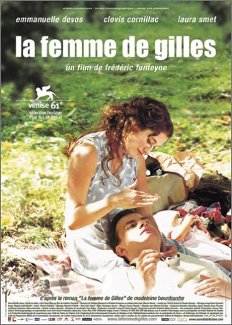 |
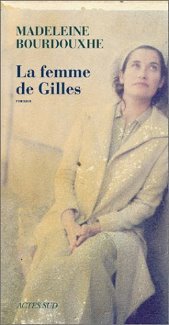 |
Theatrical Release: 2005 (USA), 2004 (France and Belgium)
Reviews More Reviews DVD Reviews
DVD Review: Koch Lorber - Region 1 - NTSC
Big thanks to Christopher Long for the Review!
| DVD Box Cover |
|
CLICK to order from: |
| Distribution |
Koch Lorber Region 1 - NTSC |
|
| Runtime | 1:47:55 | |
| Video |
1.78 Original Aspect Ratio
16X9 enhanced |
|
|
NOTE: The Vertical axis represents the bits transferred per second. The Horizontal is the time in minutes. |
||
| Bitrate |
|
|
| Audio | French Dolby Digital | |
| Subtitles | English | |
| Features |
Release Information: Studio: Koch Lorber Aspect Ratio:
Edition Details: Chapters 12 |
|
| Comments |
The
transfer is well-done overall; I could only find one or two examples
of the slightest combing, not even worth showing here. However, the
image quality is a tad too soft throughout. It's only a minor
complaint, but this beautiful cinematography deserves to be seen in
the highest resolution possible. Some people don't like the bright yellow subtitles, but I greatly prefer them. This way, titles never disappear against white backgrounds (like snow or tablecloths, etc.) "The Making of" Featurette is pretty typical fare; it is of some interest, though definitely overlong at 26 minutes. If I didn't make it clear enough above, Emmanuelle Devos is simply amazing in this film. She's worth the price of admission (or rental or purchase) all by herself. |
DVD Menus
|
|
|
|
|
|
Screen Captures
|
|
|
|
|
|
|
|
|
|
|
|
|
|
